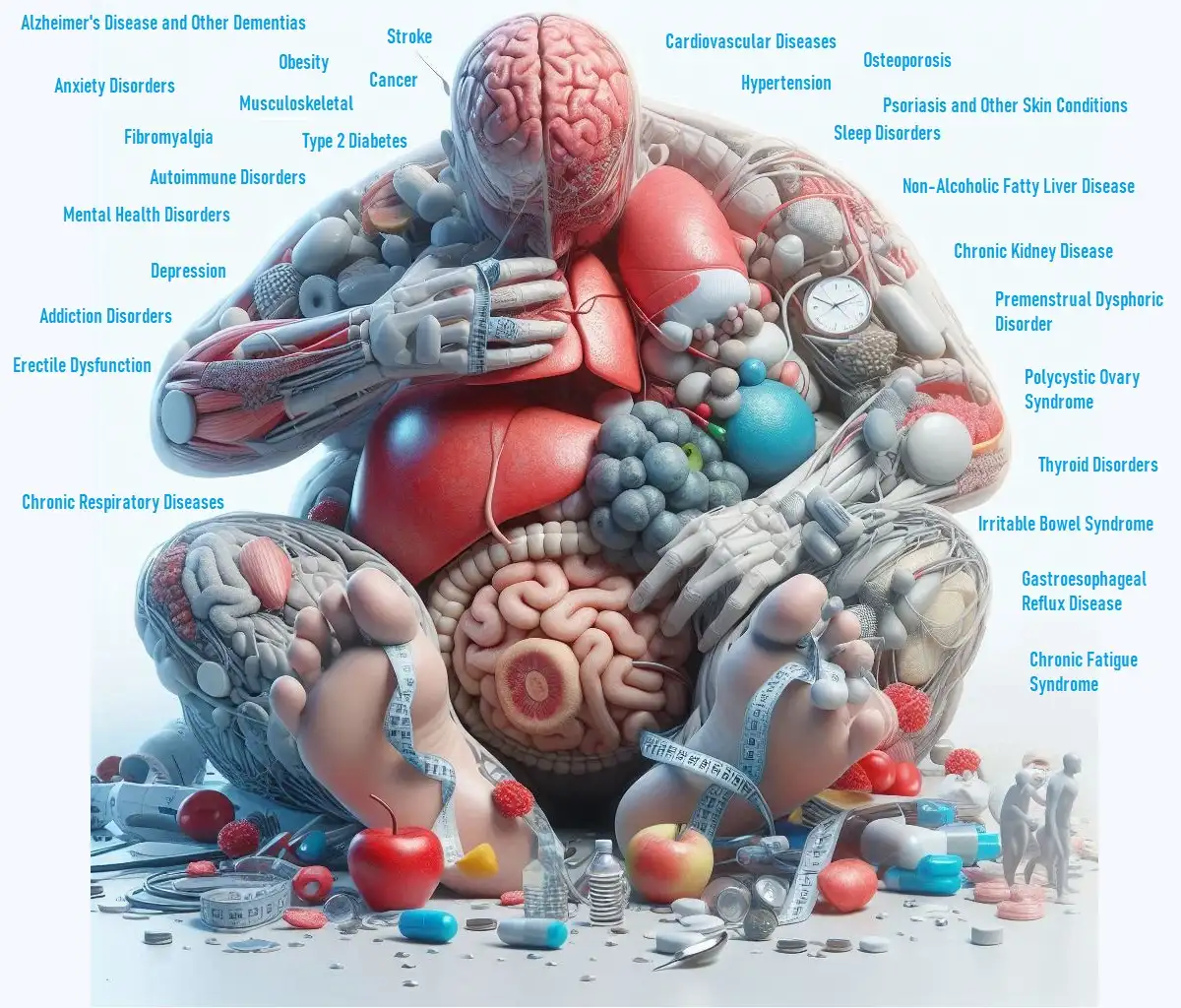
Strokes can have a profound impact on your health, affecting everything from cognitive function to overall quality of life. Understanding the various risk factors and recovery options is crucial for prevention and effective management. In this article, we’ll delve into the connection between stroke and cognitive decline, explore the impact of sleep apnea and chronic stress on stroke risk, and highlight the importance of physical therapy and addressing carotid artery disease in stroke recovery.
Key Takeaways
- Stroke and Cognitive Decline: Stroke can accelerate cognitive decline, making early detection and intervention essential.
- Sleep Apnea’s Impact: Sleep apnea increases stroke risk, so managing it is crucial for stroke prevention.
- Physical Therapy’s Role: Physical therapy is vital for regaining movement and function after a stroke.
- Carotid Artery Disease: Blockages in the carotid arteries can lead to stroke, highlighting the need for regular check-ups.
- Chronic Stress: Long-term stress can elevate stroke risk, making stress management an important aspect of prevention.
Stroke and Cognitive Decline
How Stroke Affects Cognitive Function
A stroke can have significant effects on cognitive function, often leading to challenges with memory, attention, and problem-solving. The extent of cognitive decline depends on the severity of the stroke and the areas of the brain affected.
- Brain Damage: A stroke causes damage to brain cells, which can disrupt cognitive processes. The more severe the stroke, the greater the potential for cognitive impairment.
- Post-Stroke Cognitive Changes: Many stroke survivors experience changes in their thinking abilities, which can impact daily life and independence.
Managing Cognitive Decline After a Stroke
- Early Intervention: Early assessment and intervention by a healthcare professional can help manage cognitive decline. This may include cognitive rehabilitation and therapy.
- Mental Exercises: Engage in activities that stimulate the brain, such as puzzles, reading, and learning new skills.
- Support Networks: Surround yourself with supportive family and friends who can help you navigate cognitive changes and provide emotional support.
Impact of Sleep Apnea on Stroke Risk
What is Sleep Apnea?
Sleep apnea is a condition where breathing repeatedly stops and starts during sleep. This can lead to fragmented sleep and reduced oxygen levels, putting extra strain on the heart and increasing stroke risk.
How Sleep Apnea Increases Stroke Risk
- Interrupted Sleep: Frequent interruptions in sleep can lead to elevated blood pressure and increased risk of stroke.
- Reduced Oxygen Levels: Lower oxygen levels during sleep can damage blood vessels and increase the likelihood of clot formation.
Managing Sleep Apnea to Reduce Stroke Risk
- Continuous Positive Airway Pressure (CPAP): Using a CPAP machine can help keep the airways open during sleep, improving oxygen levels and reducing stroke risk.
- Lifestyle Changes: Maintain a healthy weight, avoid alcohol, and sleep on your side to reduce symptoms.
- Medical Consultation: Regular check-ups with a sleep specialist can help manage and monitor the condition effectively.
Role of Physical Therapy in Stroke Rehabilitation
Importance of Physical Therapy
Physical therapy is a cornerstone of stroke rehabilitation. It helps individuals regain movement, strength, and independence, improving overall quality of life.
- Movement and Coordination: Therapists use various exercises and techniques to improve muscle strength, coordination, and balance.
- Functional Skills: Therapy focuses on helping individuals perform daily activities, such as walking, dressing, and cooking.
Effective Physical Therapy Strategies
- Tailored Exercise Programs: Work with a physical therapist to develop a personalized exercise program that targets your specific needs and goals.
- Consistency: Regular participation in therapy sessions is crucial for making progress and achieving the best outcomes.
- Home Exercises: Incorporate exercises into your daily routine to complement therapy sessions and reinforce progress.
Stroke and Carotid Artery Disease
Understanding Carotid Artery Disease
Carotid artery disease occurs when the arteries that supply blood to the brain become narrowed or blocked, often due to plaque buildup. This can increase the risk of stroke.
- Plaque Formation: Plaque buildup in the carotid arteries can restrict blood flow to the brain, leading to an increased risk of stroke.
- Symptoms: Carotid artery disease may not present obvious symptoms, but it can lead to transient ischemic attacks (TIAs) or strokes.
Preventing and Managing Carotid Artery Disease
- Regular Check-Ups: Regular monitoring of carotid artery health through imaging tests can help detect any issues early.
- Lifestyle Modifications: Adopt a heart-healthy diet, exercise regularly, and avoid smoking to prevent plaque buildup.
- Medical Treatment: Medications or surgical procedures may be necessary to manage severe carotid artery disease and reduce stroke risk.
Impact of Chronic Stress on Stroke Risk
How Stress Affects Stroke Risk
Chronic stress can contribute to several risk factors for stroke, including high blood pressure and unhealthy lifestyle choices.
- Elevated Blood Pressure: Prolonged stress can raise blood pressure, increasing the risk of stroke.
- Unhealthy Behaviors: Stress may lead to poor eating habits, smoking, or excessive alcohol consumption, all of which can elevate stroke risk.
Managing Chronic Stress to Prevent Stroke
- Stress-Relief Techniques: Practice relaxation techniques such as deep breathing, meditation, or yoga to manage stress effectively.
- Healthy Lifestyle Choices: Maintain a balanced diet, exercise regularly, and get adequate sleep to help manage stress.
- Professional Support: Seek help from mental health professionals if stress becomes overwhelming or persistent.
Conclusion
Understanding the various factors that contribute to stroke risk and effective management strategies can make a significant difference in prevention and recovery. From addressing cognitive decline and sleep apnea to engaging in physical therapy and managing carotid artery disease, taking a proactive approach to your health can help reduce stroke risk and improve your overall well-being. For personalized advice and treatment, consult with your healthcare provider to tailor these strategies to your individual needs.
For more information on stroke prevention and recovery, visit the American Stroke Association and the National Institute of Neurological Disorders and Stroke. These resources provide valuable insights and support for stroke management.








